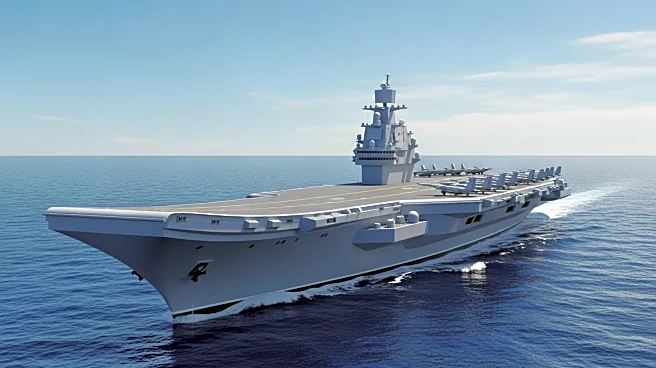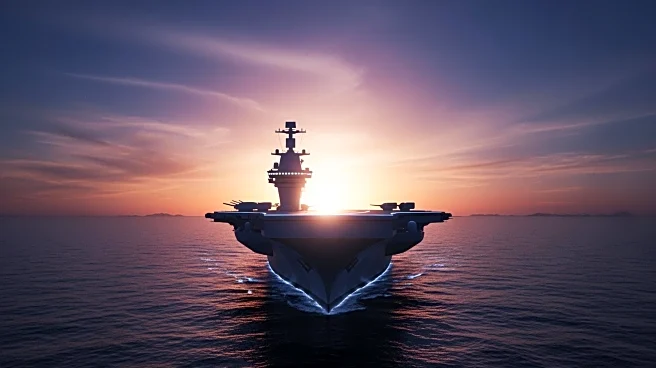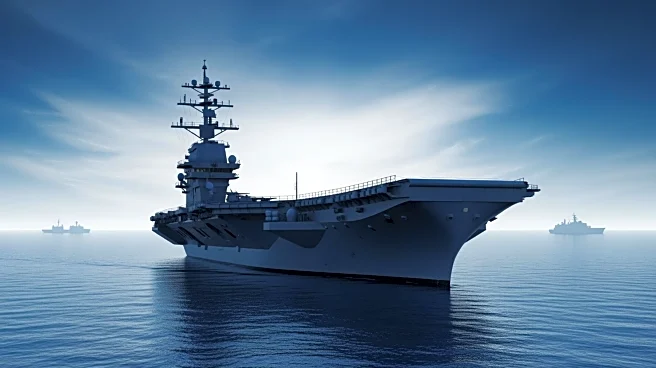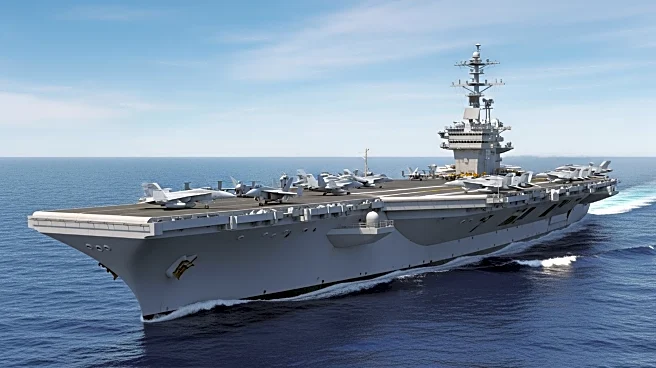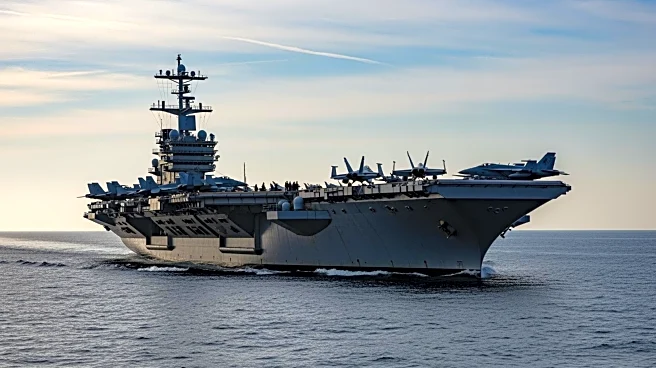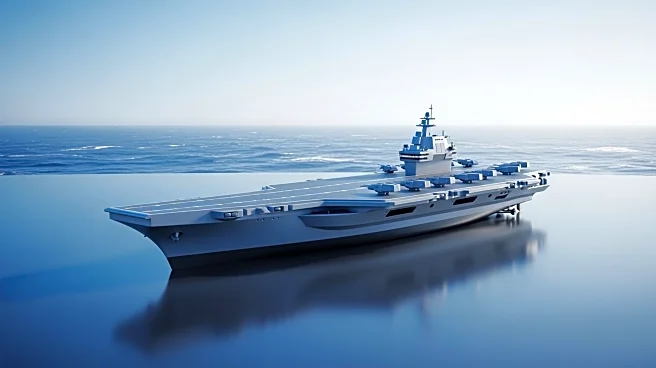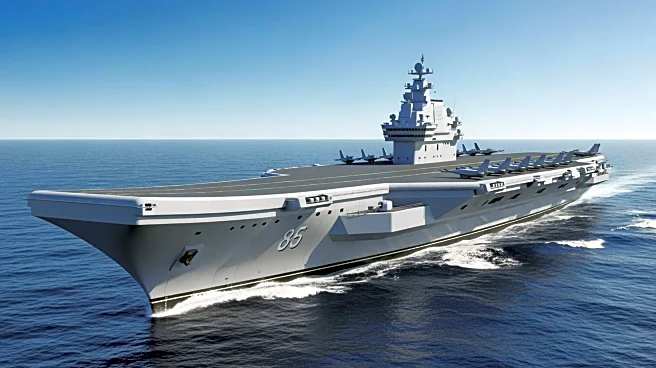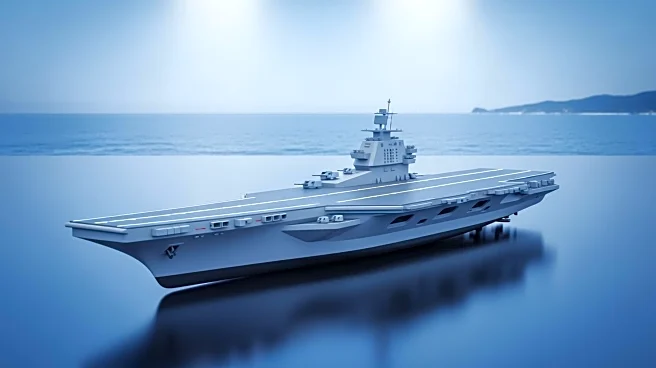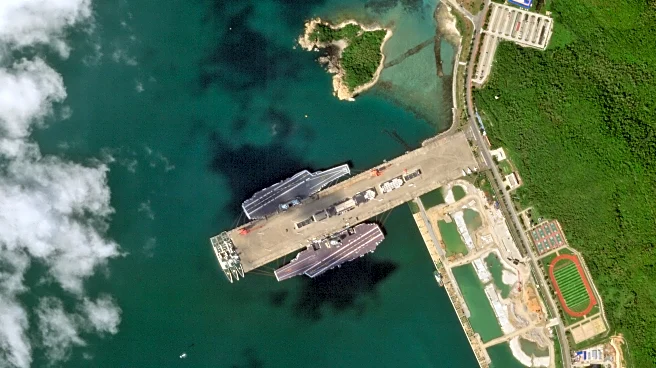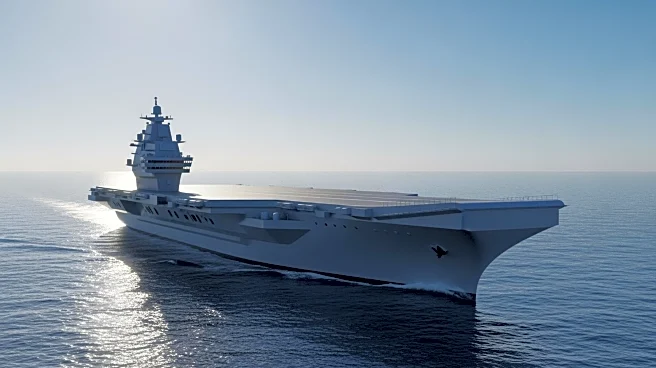What's Happening?
China has commissioned its third aircraft carrier, the CS Fujian, marking a significant advancement in its naval capabilities. The 80,000-ton vessel, constructed at the Shanghai Jiangnan Shipyard, is the largest of its kind built under China's military
expansion efforts. The Fujian features catapult-assisted take-off but arrested recovery (CATOBAR) capabilities, allowing it to launch aircraft with heavier payloads. The commissioning ceremony, attended by Chinese President Xi Jinping, showcased advanced naval aviation technology, including J-35 stealth fighters and KJ-600 early warning aircraft. This development is part of China's broader strategy to enhance its naval presence in the Pacific.
Why It's Important?
The commissioning of the Fujian represents a strategic shift in China's military posture, potentially altering the balance of power in the Indo-Pacific region. With enhanced capabilities, the Fujian allows China to project power more effectively, challenging U.S. naval dominance. This move could escalate tensions in the region, particularly concerning Taiwan and the South China Sea. The development also signals China's commitment to modernizing its military forces, which may prompt neighboring countries to bolster their own defense capabilities, leading to an arms race in the region.
Beyond the Headlines
The introduction of the Fujian into China's naval fleet raises questions about the long-term implications for regional security and international maritime law. The carrier's capabilities could embolden China to assert its territorial claims more aggressively, potentially leading to conflicts with neighboring countries. Additionally, the move may influence global naval strategies, as other nations reassess their military alliances and defense spending in response to China's growing military prowess.
